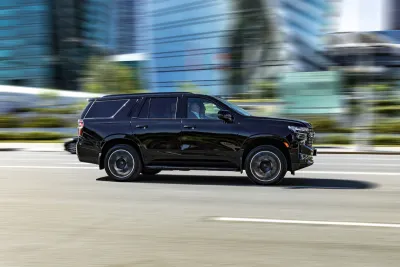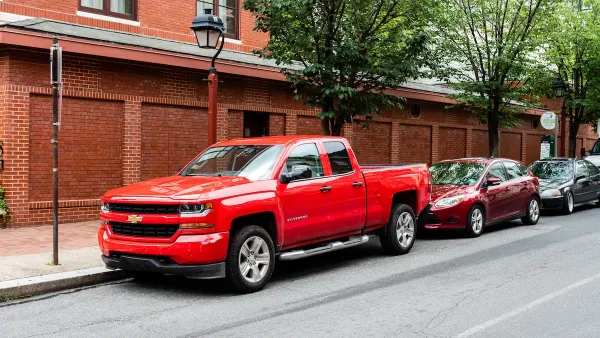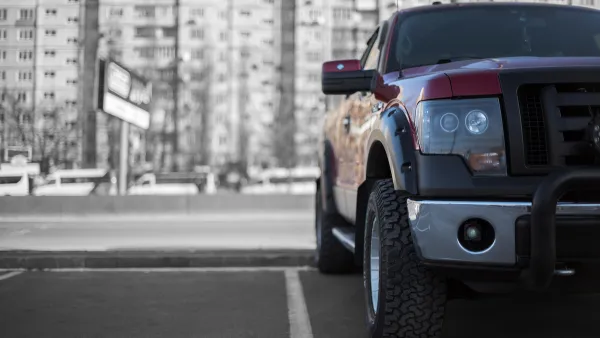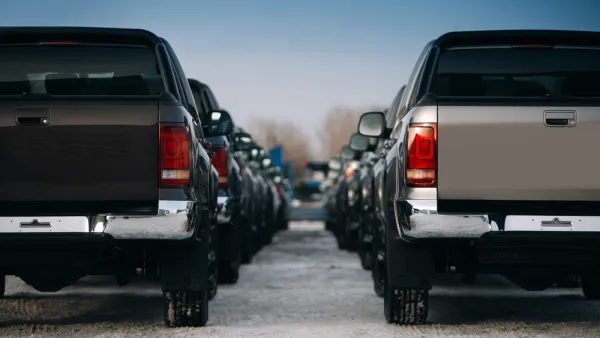A lax set of rules around vehicle size, height, and other factors is partly responsible for the alarming rise in pedestrian deaths in the United States.

An investigation by the Government Accountability Office (GAO) will look into how vehicle safety standards are impacting the rise in the deaths of pedestrians and other people outside of vehicles.
As Kea Wilson explains in Streetsblog USA, “Between 1993 and 2023, the average vehicle on U.S. roads swelled by 1,000 pounds, while simultaneously getting four inches wider, 10 inches longer and eight inches taller — bloat that's driven by the increasing sales of pick-up trucks and SUVs.”
Road safety advocates say this contributes to higher death rates. “One study estimated that 18 percent of pedestrian deaths could be avoided just by capping the hood height of passenger trucks and SUVs at the level of a modest crossover,” Wilson adds.
For example, flatbed trailers like the one that killed diplomat Sarah Debbink Langenkamp in 2022, have major blind spots that are not addressed by current regulations — “and it also wasn’t outfitted with pedestrian and cyclist-specific “side-underride” guards that could have prevented her from being swept under its wheels.”
The investigation will assess the design features that impact safety including “height, geometry, driver visibility, and direct vision.”
FULL STORY: Congressional Watchdog Launches Probe Into Why Massive Cars Kill So Many Pedestrians and Cyclists

National Parks Layoffs Will Cause Communities to Lose Billions
Thousands of essential park workers were laid off this week, just before the busy spring break season.

Retro-silient?: America’s First “Eco-burb,” The Woodlands Turns 50
A master-planned community north of Houston offers lessons on green infrastructure and resilient design, but falls short of its founder’s lofty affordability and walkability goals.

Delivering for America Plan Will Downgrade Mail Service in at Least 49.5 Percent of Zip Codes
Republican and Democrat lawmakers criticize the plan for its disproportionate negative impact on rural communities.

Test News Post 1
This is a summary

Test News Headline 46
Test for the image on the front page.

Balancing Bombs and Butterflies: How the National Guard Protects a Rare Species
The National Guard at Fort Indiantown Gap uses GIS technology and land management strategies to balance military training with conservation efforts, ensuring the survival of the rare eastern regal fritillary butterfly.
Urban Design for Planners 1: Software Tools
This six-course series explores essential urban design concepts using open source software and equips planners with the tools they need to participate fully in the urban design process.
Planning for Universal Design
Learn the tools for implementing Universal Design in planning regulations.
EMC Planning Group, Inc.
Planetizen
Planetizen
Mpact (formerly Rail~Volution)
Great Falls Development Authority, Inc.
HUDs Office of Policy Development and Research
NYU Wagner Graduate School of Public Service





























